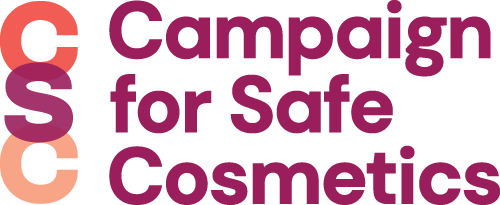[1] Ministry of Health, Labour and Welfare. Standards for Cosmetics. Available online: http://www.mhlw.go.jp/english/dl/cosmetics.pdf. Accessed April 26, 2022.
[2] European Chemicals Agency. Tar, Coal. Available online: https://echa.europa.eu/substance-information/-/substanceinfo/100.029.417. Accessed April 26, 2022.
[3] European Chemicals Agency. Tar, Coal. Available online: https://echa.europa.eu/substance-information/-/substanceinfo/100.029.417. Accessed April 26, 2022.
[4] European Chemicals Agency. Chromium trioxide. Available online: https://echa.europa.eu/substance-information/-/substanceinfo/100.014.189. Accessed April 26, 2022.
[5] European Chemicals Agency. Tar, Coal. Available online: https://echa.europa.eu/substance-information/-/substanceinfo/100.029.417. Accessed April 26, 2022.
[6] European Chemicals Agency. Chromium trioxide. Available online: https://echa.europa.eu/substance-information/-/substanceinfo/100.014.189. Accessed April 26, 2022.
[7] Ministry of Health, Labour and Welfare. Standards for Cosmetics. Available online: http://www.mhlw.go.jp/english/dl/cosmetics.pdf. Accessed April 26, 2022.
[8] European Chemicals Agency. Cadmium and its compounds. Available online: https://echa.europa.eu/substance-information/-/substanceinfo/100.239.172. Accessed April 26, 2022.
[9] European Commission. Arsenic. Available online: https://ec.europa.eu/food/safety/chemical_safety/contaminants/catalogue/arsenic_en. Accessed April 26, 2022.
[10] International Agency for Research on Cancer (IARC). IARC mission. Available online: http://www.iarc.fr/en/about/index.php. Accessed April 26, 2022.
[11] International Agency for Research on Cancer. Agents classified by the IARC monographs, volumes 1-109. Available online: http://monographs.iarc.fr/ENG/Classification/. Accessed April 26, 2022.
[12] IARC Monographs. Agents classified by the IARC Monographs. Vol. 1-109, available online: http://monographs.iarc.fr/ENG/Classification/ClassificationsAlphaOrder.pdf. Accessed April 26, 2022.
[13] Occupational Safety & Health Administration. Formaldehyde. Available online: https://www.osha.gov/SLTC/formaldehyde/index.html. Accessed April 26, 2022.
[14] Moennich J. et al. Formaldehyde-releasing preservative in baby and cosmetic products. Journal of the Dermatology Nurses’ Association, vol. 1, pp. 211-214, 2009.
[15] Jacob S. & Breithaupt A., Environmental Exposures – A pediatric perspective on allergic contact dermatitis. Skin & Aging. July 2009: 28-36.
[16] California Safe Cosmetics Program Product Database. Formaldehyde. Available online: https://cscpsearch.cdph.ca.gov/search/detailresult/4266. Accessed April 26, 2022.
[17] Joshua H, & Hillebrand E., Determination of free formaldehyde in cosmetic preservatives and surfactants by HPLC with postcolumn derivatization. American Laboratory, vol. 42, no. 8, pp 14-15, 2010.
[18] Jacob S. & Breithaupt A., Environmental Exposures – A pediatric perspective on allergic contact dermatitis. Skin & Aging. July 2009: 28-36.
[19] Moennich J. et al. Formaldehyde-releasing golpreservative in baby and cosmetic products. Journal of the Dermatology Nurses’ Association, vol. 1, pp. 211-214, 2009.
[20] Jacob S. & Breithaupt A., Environmental Exposures – A pediatric perspective on allergic contact dermatitis. Skin & Aging. July 2009: 28-36.
[21] Chemicals Known to the State to Cause Cancer or Reproductive Toxicity. Available online: https://oehha.ca.gov/proposition-65/crnr/chemicals-listed-known-state-cause-cancer-or-reproductive-toxicity. Accessed April 26, 2022.
[22] IARC Monographs. Agents classified by the IARC Monographs. Vol. 1-109, available online: http://monographs.iarc.fr/ENG/Classification/ClassificationsAlphaOrder.pdf. Accessed April 26, 2022.
[23] U.S. Department of Health and Human Services Public Health Service National Toxicology Program. Report on carcinogens. 12th edition, 2011.
[24] U.S. Environmental Protection Agency. IRIS: formaldehyde. Available online: https://cfpub.epa.gov/ncea/iris2/chemicalLanding.cfm?&substance_nmbr=419. Accessed April 26, 2022.
[25] Centers for Disease Control and Prevention. NOISH pocket guide to chemical hazards: naphtha (coal tar). Available online: http://www.cdc.gov/niosh/npg/npgd0293.html. Accessed April 26, 2022.
[26] Ministry of Health, Labour and Welfare. Standards for Cosmetics. Available online:http://www.mhlw.go.jp/english/dl/cosmetics.pdf. Accessed April 26, 2022.
[27] European Chemicals Agency. Formaldehyde. Available online: https://echa.europa.eu/substance-information/-/substanceinfo/100.000.002. Accessed April 26, 2022.
[28] Silent Spring Institution. Mammary carcinogens review database: phenacetin. Available online: http://sciencereview.silentspring.org/mamm_detail.cfm?cid=62-44-2. Accessed April 26, 2022.
[29] Silent Spring Institution. Mammary carcinogens review database: phenacetin. Available online: http://sciencereview.silentspring.org/mamm_detail.cfm?cid=62-44-2. Accessed April 26, 2022.
[30] National Library of Medicine. NIH. Phenacetin. Available online: https://pubchem.ncbi.nlm.nih.gov/compound/Phenacetin. Accessed April 26, 2022.
[31] Chemicals Known to the State to Cause Cancer or Reproductive Toxicity. Available online: https://oehha.ca.gov/proposition-65/crnr/chemicals-listed-known-state-cause-cancer-or-reproductive-toxicity. Accessed April 26, 2022.
[32] IARC Monographs. Agents classified by the IARC Monographs. Vol. 1-109, available online: http://monographs.iarc.fr/ENG/Classification/ClassificationsAlphaOrder.pdf. Accessed April 26, 2022.
[33] National Toxicology Program. Reports on carcinogens, fourteenth edition (2011): phenacetin. Available online: http://ntp.niehs.nih.gov/ntp/roc/twelfth/roc12.pdf. Accessed April 26, 2022.
[34] National Toxicology Program. CAS registry number: 62-44-2 toxicity effects. Available online: https://ntp.niehs.nih.gov/whatwestudy/testpgm/status/ts-10378-l.html. Accessed April 26, 2022.
[35] Silent Spring Institution. Mammary carcinogens review database: phenacetin. Available online: http://sciencereview.silentspring.org/mamm_detail.cfm?cid=62-44-2. Accessed April 26, 2022.
[36] EWG’s Skin Deep Cosmetics Database. Coal tar. Available online: http://www.ewg.org/skindeep/ingredient/701514/COAL_TAR/. Accessed April 26, 2022.
[37] National Toxicology Program. Reports on Carcinogens, twelfth edition, 2011. Available online: http://ntp.niehs.nih.gov/ntp/roc/twelfth/roc12.pdf. Accessed April 26, 2022.
[38] IARC Monographs. Agents classified by the IARC Monographs. Vol. 1-109, available online: http://monographs.iarc.fr/ENG/Classification/ClassificationsAlphaOrder.pdf. Accessed April 26, 2022.
[39] U.S. Environmental Protection Agency. IRIS: coke oven emissions. Available online: https://cfpub.epa.gov/ncea/iris/iris_documents/documents/subst/0395_summary.pdf. Accessed April 26, 2022.
[40] Gawkrodger DJ., Ocupational Skin cancers. Occupational Medicine, vol. 54, pp 458-63, 2003. Available online: http://occmed.oxfordjournals.org/content/54/7/458.full.pdf. Accessed April 26, 2022.
[41] National Toxicology Program. Reports on Carcinogens, twelfth edition, 2011. Available online: http://ntp.niehs.nih.gov/ntp/roc/twelfth/profiles/coaltars.pdf. Accessed April 26, 2022.
[42] Health Canada. Coal tar. Available online: https://www.canada.ca/en/health-canada/services/chemicals-product-safety/coal-tars.html. Accessed April 26, 2022.
[43] European Chemicals Agency. Tar, Coal. Available online: https://echa.europa.eu/substance-information/-/substanceinfo/100.029.417. Accessed April 26, 2022.
[44] National Toxiciology Program.Report on carcinogens, twelfth edition (2011): coal tars and coal-tar pitches. Available online: http://ntp.niehs.nih.gov/ntp/roc/twelfth/profiles/coaltars.pdf. Accessed April 26, 2022.
[45] Chemicals Known to the State to Cause Cancer or Reproductive Toxicity. Available online: https://oehha.ca.gov/proposition-65/crnr/chemicals-listed-known-state-cause-cancer-or-reproductive-toxicity. Accessed April 26, 2022.
[46] U.S. EPA, Toxicity and Exposure Assessment for Children’s Health. Benzo(a)pyrene (BaP). Available online: https://archive.epa.gov/region5/teach/web/pdf/bap_summary.pdf. Accessed April 26, 2022.
[47] National Toxicity Program (NTP). Available online: https://ntp.niehs.nih.gov/ntp/roc/content/profiles/polycyclicaromatichydrocarbons.pdf. Accessed April 26, 2022.
[48] National Toxicity Program (NTP). Available online: https://ntp.niehs.nih.gov/ntp/roc/content/profiles/polycyclicaromatichydrocarbons.pdf. Accessed April 26, 2022.
[49] Silent Spring Institution. Mammary carcinogens review database: phenacetin. Available online: http://sciencereview.silentspring.org/mamm_detail.cfm?cid=62-44-2. Accessed April 26, 2022.
[50] United States Department of Labor. OSHA: benzene. Available online: https://www.osha.gov/SLTC/benzene/index.html. Accessed April 26, 2022.
[51] California Safe Cosmetics Program Product Database. Benzene. Available online: https://cscpsearch.cdph.ca.gov/search/detailresult/61. Accessed April 26, 2022.
[52] National Toxicology Program. CAS registry number: 62-44-2 toxicity effects. Available online: https://ntp.niehs.nih.gov/whatwestudy/testpgm/status/ts-10378-l.html. Accessed April 26, 2022.
[53] IARC Monographs. Agents classified by the IARC Monographs. Vol. 1-109, available online: http://monographs.iarc.fr/ENG/Classification/ClassificationsAlphaOrder.pdf. Accessed April 26, 2022.
[54] Chemicals Known to the State to Cause Cancer or Reproductive Toxicity. Available online: https://oehha.ca.gov/proposition-65/crnr/chemicals-listed-known-state-cause-cancer-or-reproductive-toxicity. Accessed April 26, 2022.
[55] Silent Spring Institution. Mammary carcinogens review database: phenacetin. Available online: http://sciencereview.silentspring.org/mamm_detail.cfm?cid=62-44-2. Accessed April 26, 2022.
[56] United States Environmental Protection Agency. The original list of hazardous air pollutants as follows. Available online: https://www3.epa.gov/airtoxics/188polls.html. Accessed April 26, 2022.
[57] United States Environmental Protection Agency. Toxic and priority pollutants. Available online: http://water.epa.gov/scitech/methods/cwa/pollutants-background.cfm#pp. Accessed April 26, 2022.
[58] The Endocrine Disruption Exchange (TEDX). Benzene. Available online: http://endocrinedisruption.org/popup-chemical-details?chemid=401. Accessed April 26, 2022.
[59] Centers for Disease Control and Prevention. NOISH pocket guide to chemical hazards: benzene. Available online: http://www.cdc.gov/niosh/npg/npgd0049.html. Accessed April 26, 2022.
[60] European Chemicals Agency. Chromium trioxide. Available online: https://echa.europa.eu/substance-information/-/substanceinfo/100.014.189. Accessed April 26, 2022.
[61] OSPAR Commission. List of substances of possible concern. Available online: https://www.ospar.org/work-areas/hasec/hazardous-substances/possible-concern/list. Accessed April 26, 2022.
[62] IARC Monographs. Mineral oils, untreated or mildly treated. Available online: http://monographs.iarc.fr/ENG/Monographs/vol100F/mono100F-19.pdf. Accessed April 26, 2022.
[63] EWG’s Skin Deep Cosmetics Database. Mineral oil. Available online: http://www.ewg.org/skindeep/ingredient/703977/MINERAL_OIL/. Accessed April 26, 2022.
[64] Chemicals Known to the State to Cause Cancer or Reproductive Toxicity. Available online: https://oehha.ca.gov/proposition-65/crnr/chemicals-listed-known-state-cause-cancer-or-reproductive-toxicity. Accessed April 26, 2022.
[65] NIH National Library of Medicine. CAS registry number: 62-44-2 toxicity effects. Available online: https://pubchem.ncbi.nlm.nih.gov/compound/Phenacetin. Accessed April 26, 2022.
[66] IARC Monographs. Agents classified by the IARC Monographs. Vol. 1-109, available online: http://monographs.iarc.fr/ENG/Classification/ClassificationsAlphaOrder.pdf. Accessed April 26, 2022.
[67] Centers for Disease Control and Prevention. NOISH pocket guide to chemical hazards: oil mist (mineral). Available online: http://www.cdc.gov/niosh/npg/npgd0472.html. Accessed April 26, 2022.
[68] IARC Monographs. Ethylene oxide. Available online: http://monographs.iarc.fr/ENG/Monographs/vol97/mono97-7.pdf. Accessed April 26, 2022.
[69] EWG’s Skin Deep Cosmetics Database. Formaldehyde. Available online: http://www.ewg.org/skindeep/ingredient/726229/ETHYLENE_OXIDE/. Accessed April 26, 2022.
[70] Silent Spring Institution. Mammary carcinogens review database: ethylene oxide. Available online: http://sciencereview.silentspring.org/mamm_detail.cfm?cid=75-21-8. Accessed April 26, 2022.
[71] Silent Spring Institution. Mammary carcinogens review database: ethylene oxide. Available online: http://sciencereview.silentspring.org/mamm_detail.cfm?cid=75-21-8. Accessed April 26, 2022.
[72] Chemicals Known to the State to Cause Cancer or Reproductive Toxicity. Available online: https://oehha.ca.gov/proposition-65/crnr/chemicals-listed-known-state-cause-cancer-or-reproductive-toxicity. Accessed April 26, 2022.
[73] The Endocrine Disruption Exchange (TEDX). Benzene. Available online: http://endocrinedisruption.org/popup-chemical-details?chemid=578. Accessed April 26, 2022.
[74] Centers for Disease Control and Prevention. NOISH pocket guide to chemical hazards: naphtha (coal tar). Available online: http://www.cdc.gov/niosh/npg/npgd0275.html. Accessed April 26, 2022.
[75] European Commission. Crude and refined coal tars. Available online: https://echa.europa.eu/en/substance-information/-/substanceinfo/100.029.417. Accessed April 26, 2022.
[76] Occupational Safety and Health Administration. Hexavalent Chromium. Available online: https://www.osha.gov/Publications/OSHA-3373-hexavalent-chromium.pdf. Accessed April 26, 2022.
[77] Occupational Safety & Health Administration. Cadmium. Available online: https://www.osha.gov/SLTC/cadmium/. Accessed April 26, 2022.
[78] EWG’s Skin Deep Cosmetic Database. Available online: https://www.ewg.org/skindeep/. Accessed April 26, 2022.
[79] EWG’s Skin Deep Database. Impurities of concern in personal care products. August 6, 2014.
[80] California Safe Cosmetics Program Product Database. Arsenic. Available online: https://cscpsearch.cdph.ca.gov/search/detailresult/715. Accessed April 26, 2022.
[81] Hormones Matter. Toxins in cosmetics – contaminants in your personal care products. Available online: http://www.hormonesmatter.com/toxins-cosmetics/. Accessed April 26, 2022.
[82] EWG’s Skin Deep Database. Available online: https://www.ewg.org/skindeep/. Accessed April 26, 2022.
[83] Chemicals Known to the State to Cause Cancer or Reproductive Toxicity. Available online: https://oehha.ca.gov/proposition-65/crnr/chemicals-listed-known-state-cause-cancer-or-reproductive-toxicity. Accessed April 26, 2022.
[84] IARC Monographs. Agents classified by the IARC Monographs. Vol. 1-109, available online: http://monographs.iarc.fr/ENG/Classification/ClassificationsAlphaOrder.pdf. Accessed April 26, 2022.
[85] NIH National Library of Medicine. CAS registry number: 62-44-2 toxicity effects. Available online: https://pubchem.ncbi.nlm.nih.gov/compound/Phenacetin. Accessed April 26, 2022.
[86] Chemicals Known to the State to Cause Cancer or Reproductive Toxicity. Available online: https://oehha.ca.gov/proposition-65/crnr/chemicals-listed-known-state-cause-cancer-or-reproductive-toxicity. Accessed April 26, 2022.
[87] United States Department of Labor. OSHA: cadmium. Available online: https://www.osha.gov/SLTC/cadmium/index.html. Accessed April 26, 2022.
[88] Ministry of Health, Labour and Welfare. Standards for Cosmetics. Available online: http://www.mhlw.go.jp/english/dl/cosmetics.pdf. Accessed April 26, 2022.
[89] European Chemicals Agency. Cadmium and its compounds. Available online: https://echa.europa.eu/substance-information/-/substanceinfo/100.239.172. Accessed April 26, 2022.
[90] U.S. Environmental Protection Agency (EPA). IRIS: Arsenic, inorganic. Available online: https://cfpub.epa.gov/ncea/iris/iris_documents/documents/subst/0278_summary.pdf. Accessed April 26, 2022.
[91] United States Environmental Protection Agency. Priority Pollutants. Available online: http://water.epa.gov/scitech/methods/cwa/pollutants.cfm. Accessed April 26, 2022.
[92] The Endocrine Disruption Exchange (TEDX). Arsenic. Available online: http://endocrinedisruption.org/popup-chemical-details?chemid=389. Accessed April 26, 2022.
[93] Centers for Disease Control and Prevention. NOISH pocket guide to chemical hazards: Arsenic. Available online: http://www.cdc.gov/niosh/npg/npgd0038.html. Accessed April 26, 2022.
[94] European Commission. Arsenic. Available online: https://ec.europa.eu/food/safety/chemical_safety/contaminants/catalogue/arsenic_en. Accessed April 26, 2022.
[95] European Chemicals Agency (ECHA). Candidate list of substances of very high concern for authorization: chromium trioxide. Available online: http://echa.europa.eu/candidate-list-table?p_p_id=substancetypelist_WAR_substanceportlet&p_p_lifecycle=0&p_p_state=normal&p_p_mode=view&p_p_col_id=column-1&p_p_col_pos=2&p_p_col_count=3&_substancetypelist_WAR_substanceportlet_delta=20&_substancetypelist_WAR_substanceportlet_keywords=&_substancetypelist_WAR_substanceportlet_advancedSearch=false&_substancetypelist_WAR_substanceportlet_andOperator=true&_substancetypelist_WAR_substanceportlet_orderByCol=INCLUSIONDATECL&_substancetypelist_WAR_substanceportlet_orderByType=desc&_substancetypelist_WAR_substanceportlet_cur=6 July 23, 2014. Accessed April 26, 2022.
[96] Centers for Disease Control and Prevention. NOISH pocket guide to chemical hazards: Chromic acid and chromates. Available online: http://www.cdc.gov/niosh/npg/npgd0138.html. Accessed April 26, 2022.
[97] United States Environmental Protection Agency. Priority Polutants. Available online: http://water.epa.gov/scitech/methods/cwa/pollutants.cfm. Accessed April 26, 2022.
[98] European Commission. Chromium trioxide. Available online: http://ec.europa.eu/consumers/cosmetics/cosing/index.cfm?fuseaction=search.details_v2&id=80923. Accessed April 26, 2022.
[99] United Stated Department of Labor. OSHA: silica, crystalline. Available online: https://www.osha.gov/dsg/topics/silicacrystalline/index.html. Accessed April 26, 2022.
[100] Crystalline silica and health from a European industry perspective. What is respirable crystalline silica (RSC) ? Available online: http://www.crystallinesilica.eu/content/what-respirable-crystalline-silica-rcs. Accessed April 26, 2022.
[101] EWG’s Skin Deep Cosmetics Database. Silica, crystalline. Available online: http://www.ewg.org/skindeep/ingredient/705472/SILICA%2C_CRYSTALLINE_%28QUARTZ%29. Accessed April 26, 2022.
[102] U.S. Department of Health and Human Services Public Health Service National Toxicology Program. Report on carcinogens. 12th edition, 2011.
[103] IARC Monographs. Agents classified by the IARC Monographs. Vol. 1-109, available online: http://monographs.iarc.fr/ENG/Classification/ClassificationsAlphaOrder.pdf. Accessed April 26, 2022.
[104] Chemicals Known to the State to Cause Cancer or Reproductive Toxicity. Available online: https://oehha.ca.gov/proposition-65/crnr/chemicals-listed-known-state-cause-cancer-or-reproductive-toxicity. Accessed April 26, 2022.
[105] Centers for Disease Control and Prevention. NOISH pocket guide to chemical hazards, silica, crystalline. Available online: http://www.cdc.gov/niosh/npg/npgd0684.html. Accessed April 26, 2022.


































